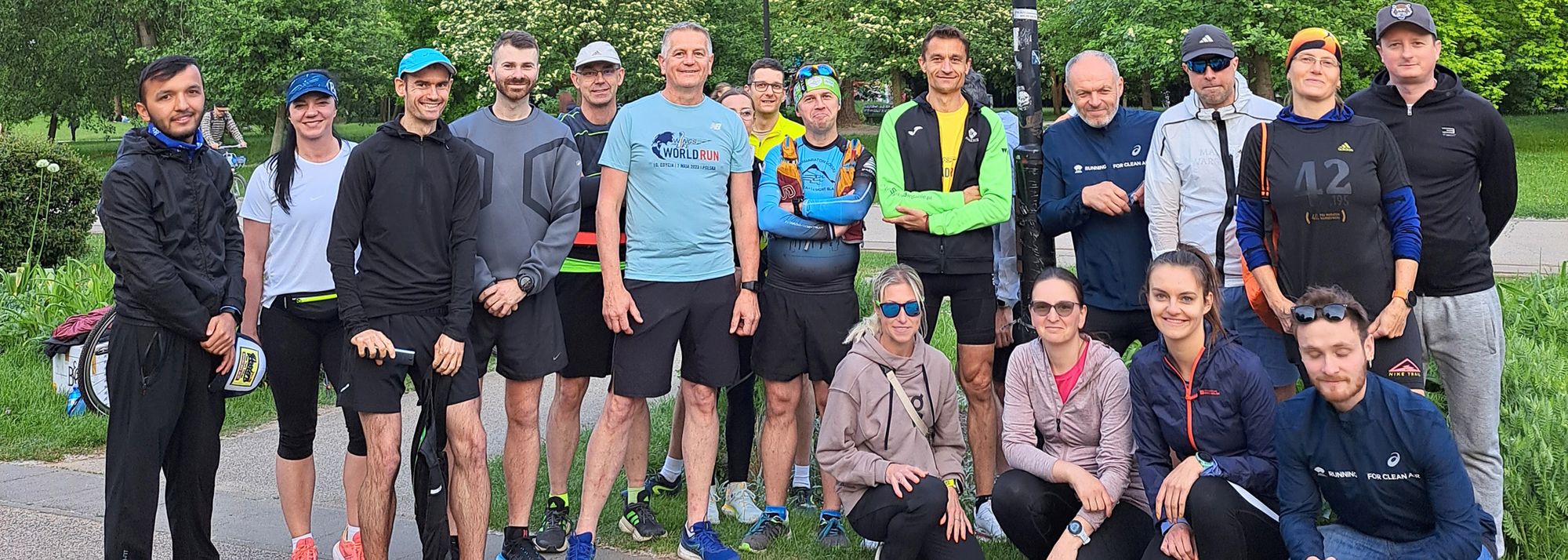The Running for Clean Air training session in Warsaw's Pole Mokotowskie
As part of the Running for Clean Air project, which launched earlier this year, World Athletics deployed an air quality sensor in Warsaw in April to measure the air quality and related weather factors that impact those exercising in the area.
Air quality had become a key topic for local project partners who continuously try to educate people about its significance and impact on health and running performance.
The initial data collected at Park Pole Mokotowskie revealed clean air in this green space which makes it an ideal place for running and exercising. The European Air Quality Index (AQI EU) levels for May and June stayed within the ‘fair’ and ‘moderate’ ranges, with one exception (14 June) when the index climbed up to 76, categorising the air as ‘poor’.
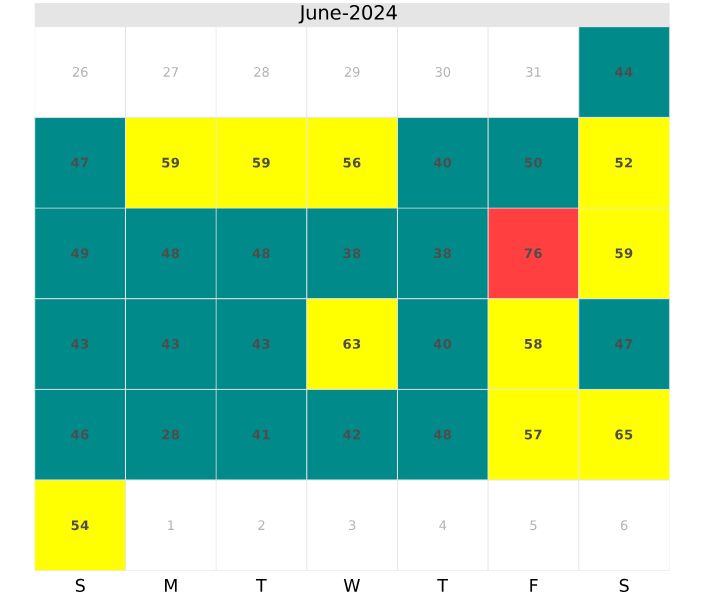
This calendar plot indicates the AQI EU for each day in June with the worst value of 76 in the red field on 14 June
However, with the arrival of summer and sunny days, temperatures are set to rise, bringing a different level of air pollution than in the cooler months and significant heat stress for runners.
First heat stress results
In May, heat-related risk factors remained low, but by June, the Wet Bulb Globe Temperature (WBGT) index started to indicate significant heat stress for those exercising in Pole Mokotowskie. WBGT is a comprehensive measure of heat stress based on different weather-related factors, such as temperature, humidity, wind speed, and solar radiation. June recorded nine days with WBGT warnings and one day (28 June) with a severe warning, according to the environmental report.
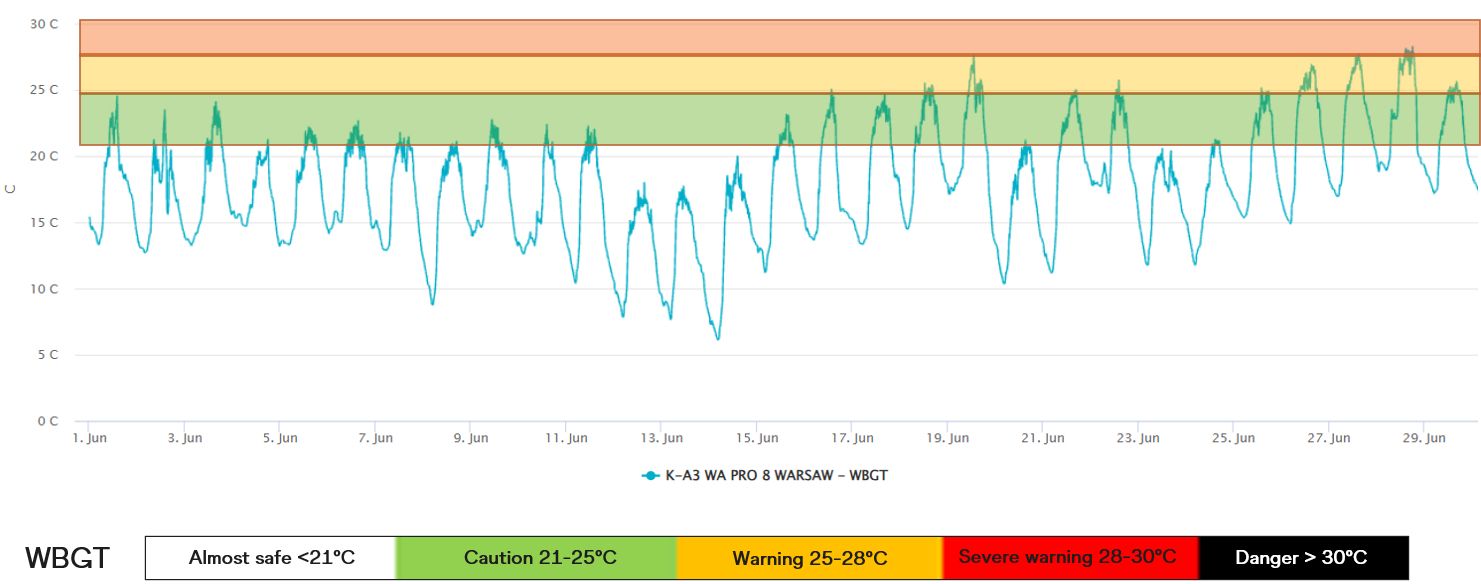
The development of WBGT index over the period of one month
“It’s common to see both the AQI EU and WBGT rise as we enter summer, which matches our past measurements from other locations,” said Frederic Garrandes from the World Athletics Health and Science Department, who compiled the report. “July and August will likely bring even higher values.”
One reason for this increase is that during summer, the AQI EU is largely influenced by ozone levels. Ozone is created by chemical reactions between primary pollutants, such as car exhaust fumes produced in the morning, in the presence of sunlight. This process peaks in the early afternoon after the exhaust fumes from morning rush hour had time to react in sunlight.
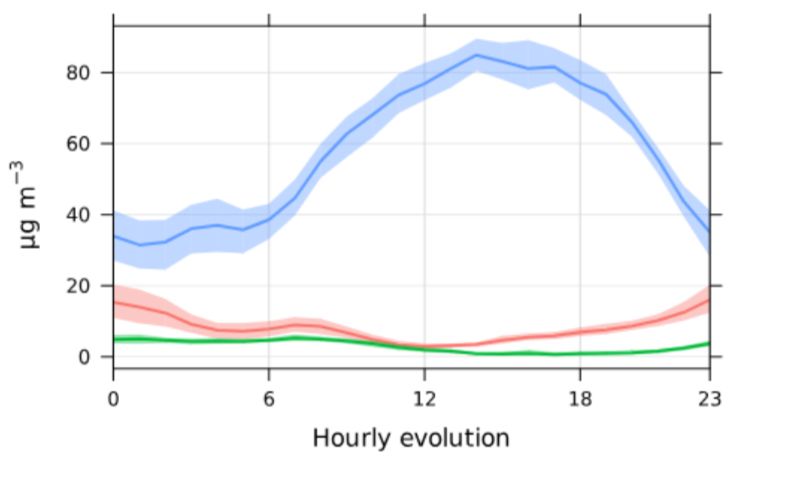
The blue line shows aggregated data of ozone’s hourly evolution with a peak between 14:00 and 16:00. The red line shows NO2 and the green line NO
Connecting through awareness
To engage with people and build a community around this topic, Running for Clean Air hosts regular monthly training sessions in the Park Pole Mokotowskie which are facilitated by leading Polish runners.
“Talking about a challenging and a less known topic, such as clean air, becomes easier when you have already connected over a shared passion for running,” says Dariusz Nożyński, who led the runs and demonstrated stretching routines at each training session.
The programme of the training sessions differs slightly each month, depending on the number and physical level of people attending. Everyone is welcome to join.
The Running for Clean Air project will continue in Warsaw until the end of September. Supported by the Warsaw Marathon Foundation, Polish Athletics, The City of Warsaw, and ASICS Poland, three more training sessions are scheduled, with dates available on the project’s website.
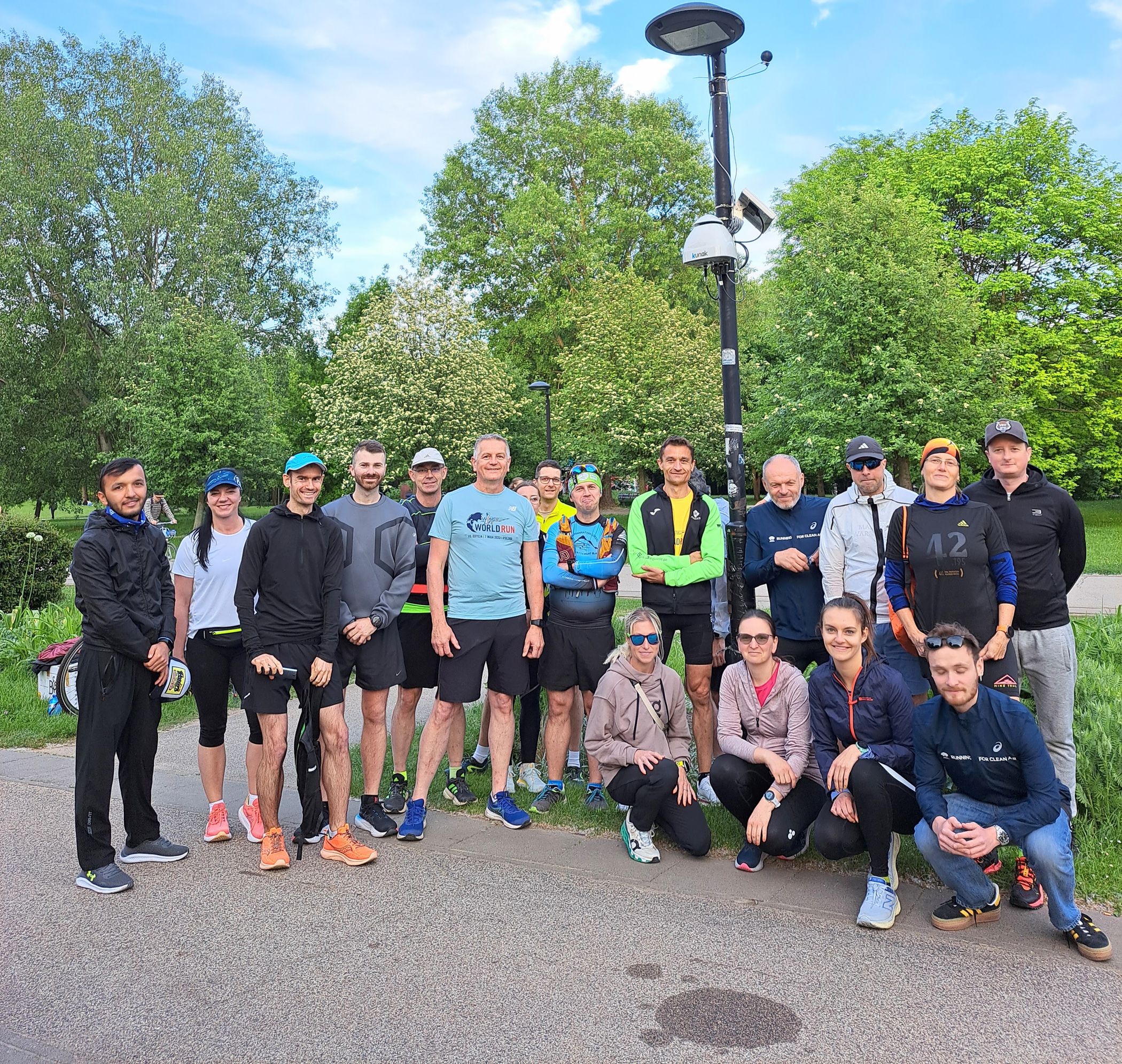
The Running for Clean Air training session in Pole Mokotowskie
Running for Clean Air
Running for Clean Air is a World Athletics initiative, funded by the Clean Air Fund. Its objective is to address air pollution in urban areas. World Athletics cooperates with local stakeholders to measure hyper-local air quality and share the data in a large awareness campaign, using city marathons as the key platform to leverage existing running communities, spark positive transformations within cities, and increase awareness of air quality issues. Visit the project website to learn more.


